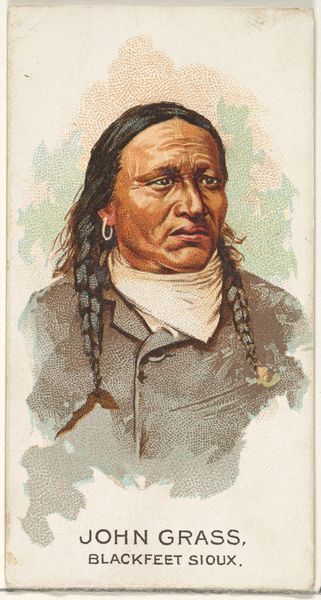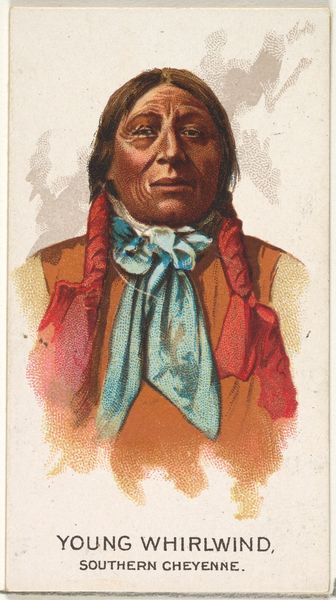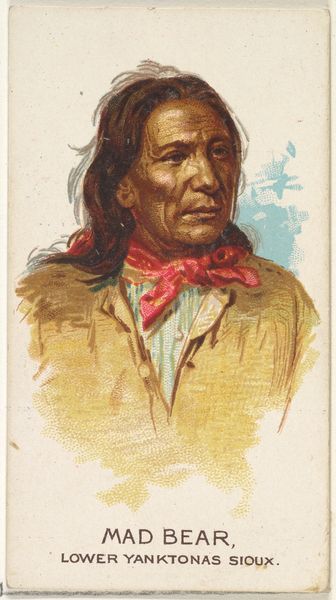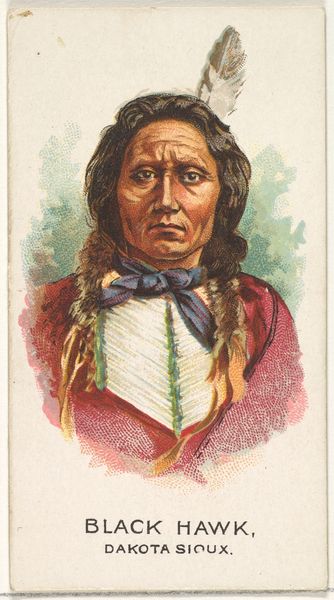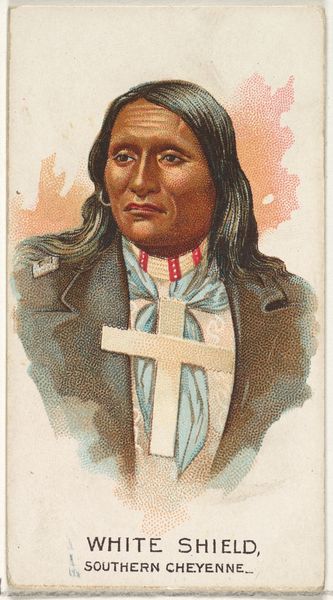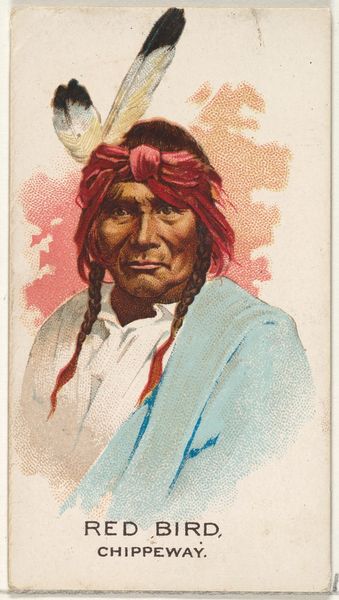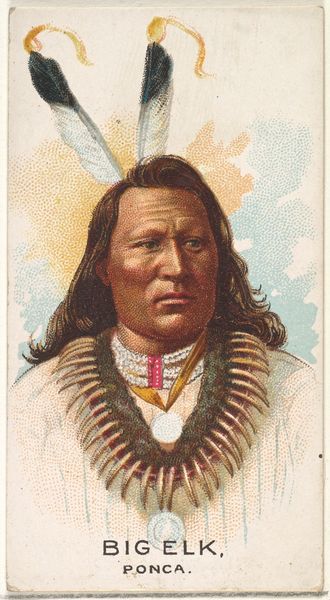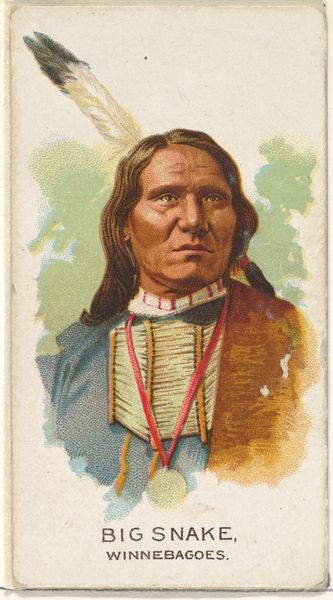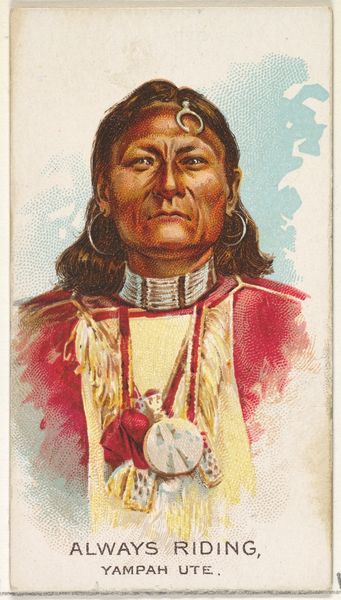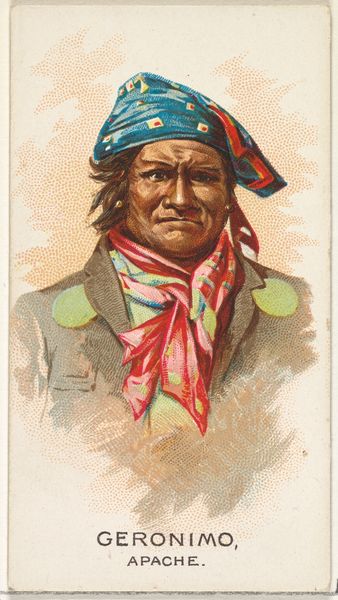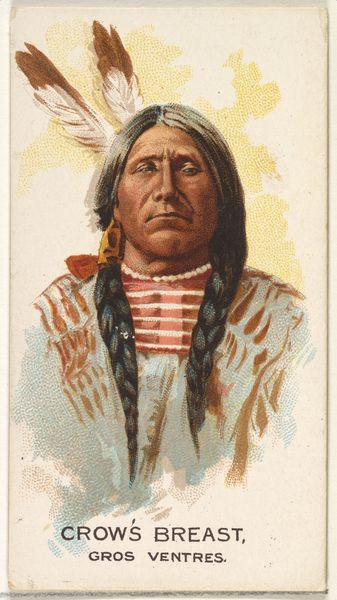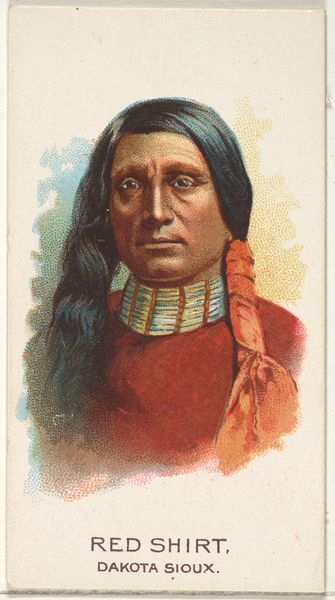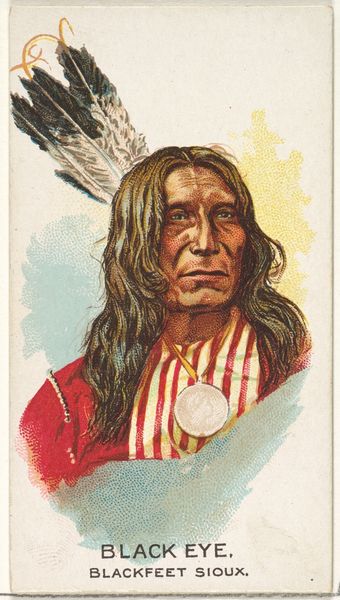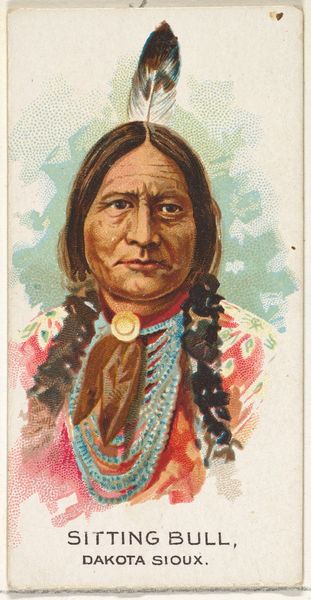
Spotted Tail, Blackfeet Sioux, from the American Indian Chiefs series (N2) for Allen & Ginter Cigarettes Brands 1888
0:00
0:00
drawing, print
#
portrait
#
drawing
# print
#
impressionism
#
caricature
Dimensions: Sheet: 2 3/4 x 1 1/2 in. (7 x 3.8 cm)
Copyright: Public Domain
Curator: This print, dating back to 1888, is from Allen & Ginter's "American Indian Chiefs" series, showcasing Spotted Tail, a leader of the Blackfeet Sioux. Editor: It's rather striking, isn't it? The composition feels oddly flattened, and the color palette has a limited, almost muted quality that seems somewhat at odds with its subject matter. Curator: It was intended as a collectible card for cigarette brands. These cards were not about true representation; they promoted specific narratives tied to American expansionism. They reflect popular and often stereotypical depictions of Indigenous peoples. Editor: The attempt at portraying Spotted Tail’s likeness appears heavily stylized. Look at the shading and lines that define the contours of his face – they are exaggerated to such a point that the work flirts with caricature. It's unsettling. Curator: Precisely, such depictions played a role in shaping public perception and were undeniably part of the systematic marginalization of Native Americans. These cards were tools used to further this political and social agenda. Editor: The rendering of the textile draped over him also draws the eye; there is no clear articulation of form beyond this blanket-like mass of layered shades of orange and yellow, lacking dimensionality or volume. Curator: We must view such artworks through the lens of their historical context. Although on the surface they are just commercial ephemera, below they represent and perpetuate damaging ideologies about American Indians and manifest destiny. Editor: I find it problematic how the techniques employed – from the flat planes of color to the distorted features – transform Spotted Tail, stripping his dignity into a mere consumer item. Curator: And it reminds us of art’s potent and enduring influence – both to commemorate and, disturbingly, to stereotype. Editor: Ultimately, even in its aesthetic shortcomings, the image holds significant lessons about cultural power and representation.
Comments
No comments
Be the first to comment and join the conversation on the ultimate creative platform.
